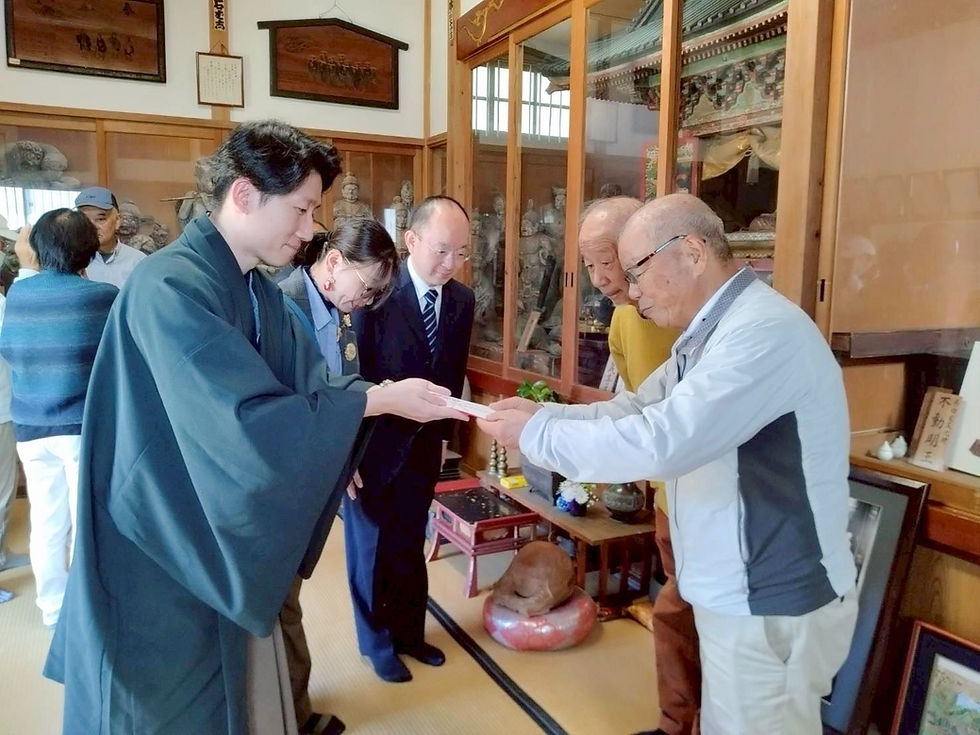Features unique to Ukiyo-e
- 伝統屋 暁

- 2022年2月5日
- 読了時間: 3分
更新日:2022年3月24日
Konnichiwa! Hallo everyone!
Dentoya Akatsuki currently sells Tamahagane accessories on consignment at Fukuoka City Museum, Sano Art Museum, and Mori Arts Center Gallery in Roppongi Hills.
Some items have already been sold out at the Fukuoka City Museum and Sano Art Museum, and we are glad to hear it!! Thank you very much.
By the way, "Sword x Ukiyo-e" exhibition is currently on display at "Mori Arts Center Gallery".
TheHEROES展

"Ukiyo-e" is a genre of Japanese traditional painting.
Most of the ukiyo-e prints were woodblock prints that could be made in large quantities, but some were hand-painted one by one.
In this exhibition, there are also ukiyo-e prints of military commanders such as Minamoto no Yorimitsu, Minamoto no Yoshitsune, Uesugi Kenshin, and Takeda Shingen.
I wrote about ukiyo-e woodblock prints once before, but I haven't written enough yet, so I will continue to introduce it this time.
One of the characteristics of woodblock print is that it can be done by "division of labor".

It begins with the publisher, giving instructions like a producer.
Based on the instructions, the painter draws the picture and the engraver makes the woodblock.
The painter gives detailed instructions on the colors of each woodblock. At the time of the sketch, it seems that each hair was not instructed in detail, but it was decided at this stage.
Next, the woodblock printer paints a color one by one based on the color specification.
Exquisite paint adjustments are required to complete the picture that the painter envisioned.
In this way, woodblock prints are works of art that are made up of the wonderful techniques of each.This is a big difference from other paintings.
To put it the other way around, it is a collection of detailed technologies that cannot be done without division of labor.
For example, "gradation of the color".
Such a beautiful gradation is made with a flat plate! It is created by adjusting the force when applying with a brush. It requires considerable skill.
Hokusai's "Red Fuji" is a famous work for gradation.

Image: From pinterest
It is a work that makes heavy use of gradation, so only skilled print masters were allowed to make it.
As an aside, Katsushika Hokusai was not an ukiyo-e painter from the beginning, but originally worked as a engraver.
Hokusai, who has always liked to draw pictures, wanted to become a painter, so he started working at Katsukawa Shunsho and made his debut the following year.
It seems that he made his debut about five years later than most people, but he soon became famous by making use of his unusual ideas and drawing power.
Since he has experience as a engraver, his instructions may have been particular about the details.
Looking at the gradation of woodblock prints again, isn't it amazing?

Image: From pinterest
This is Hiroshige Utagawa famous work, "The Intertwined Catalpa Trees at Azuma Grove" from One Hundred Famous Views of Edo.
There are many other works with attractive compositions and colors in this One Hundred Famous Views of Edo.
This time I wrote "Characteristics of Ukiyo-e", how was it?
In the exhibition of "Mori Arts Center Gallery", you can see not only ukiyo-e prints but also famous swords from the Museum of Fine Arts, Boston!
Tamahagane hair elastics and ring earrings, which are sold on consignment, seem to be popular in here!


Ukiyo-e woodblock prints are so deep that I haven't been able to tell you all about it yet, so I would like to feature it several times♪
We will continue to sell on consignment at the Fukuoka City Museum and Sano Art Museum!
*♪¸¸.•*¨・:*ೄ·♫•*¨*•.¸¸♪✧*♪¸¸.•*¨・:*ೄ·*♪¸¸.•*¨・:*ೄ·♫•*¨*•.¸¸♪✧*♪¸¸.•*¨・:*ೄ·
We deliver you Japanese genuine skill with warmhearted crafts. We hope that we can continue to help you add color to your life with "tradition" and "craftsmanship".




コメント